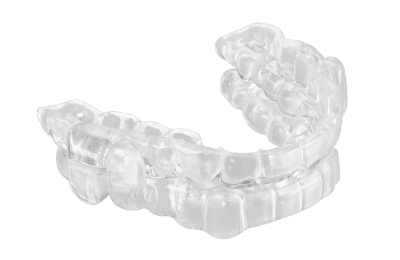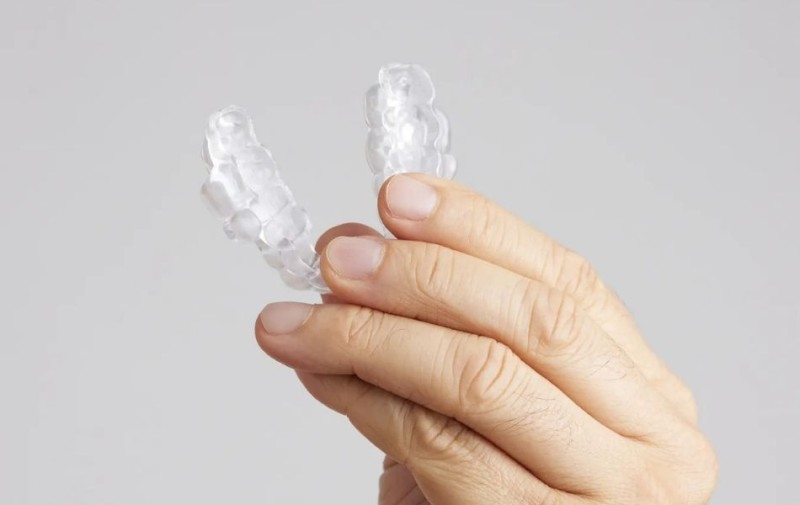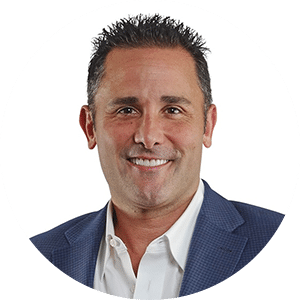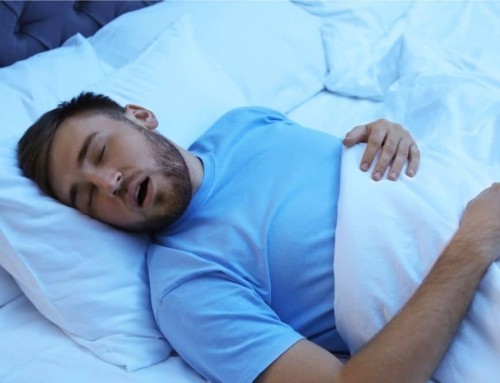 For many people with obstructive sleep apnea (OSA), CPAP therapy is a common starting point for treatment. Although effective, it’s not always the most comfortable or manageable solution in the long run. Fortunately, there’s a growing movement toward more personalized care approaches. Our highly-trained sleep apnea expert Dr. Jeff Haddad offers the SLEEP APNEA PRECISION APPROACH™, which focuses on tailoring treatment to fit each patient’s lifestyle and health needs.
For many people with obstructive sleep apnea (OSA), CPAP therapy is a common starting point for treatment. Although effective, it’s not always the most comfortable or manageable solution in the long run. Fortunately, there’s a growing movement toward more personalized care approaches. Our highly-trained sleep apnea expert Dr. Jeff Haddad offers the SLEEP APNEA PRECISION APPROACH™, which focuses on tailoring treatment to fit each patient’s lifestyle and health needs.
If you’re struggling with CPAP, this guide will walk you through the process of transitioning to oral appliance therapy—an alternative that’s simpler, quieter, and often more comfortable.
Understanding CPAP Therapy and Its Challenges
CPAP, or Continuous Positive Airway Pressure therapy, delivers constant air pressure through a mask to keep your airway open while you sleep. It has long been considered the gold standard for moderate to severe OSA.
However, CPAP isn’t without its drawbacks. Many users report mask discomfort, dry mouth, skin irritation, and frequent disturbances caused by machine noise. It’s also cumbersome to travel with, making it hard to stay consistent while on the go.
Studies show that many patients stop using their CPAP machines over time. If you’re dealing with similar frustrations, you’re not alone—and you’re not out of options. At the Michigan Center for TMJ & Sleep Wellness, we often see patients seeking alternatives that better fit their lifestyle and comfort preferences.
What Is Oral Appliance Therapy?
Oral appliance therapy offers a more comfortable and travel-friendly alternative to CPAP. These small, custom-made devices are worn during sleep to gently reposition the lower jaw or tongue, helping to keep the airway open throughout the night.
This therapy is particularly effective for patients with mild to moderate sleep apnea and those whose primary concern is disruptive snoring.

How Oral Appliances Work
Rather than using forced air to keep the airway open, oral appliances work by adjusting your jaw or tongue position. This mechanical change prevents the tissues in the throat from collapsing, which causes obstructive breathing events during sleep.
Key Benefits of Oral Appliance Therapy
Many patients prefer oral appliance therapy for its ease of use and minimal disruption. Some of the most commonly reported benefits include:
- A more natural and comfortable fit than a CPAP mask
- Quiet, hose-free operation—no machine noise
- Compact size, ideal for travel and home use
- Simple to clean and maintain
- Effective for both snoring and sleep apnea
This approach doesn’t just manage symptoms—it can help you reclaim restful sleep with fewer interruptions and less hassle.
Why Choose Oral Appliance Therapy Over CPAP?
Oral appliances can offer relief without sacrificing effectiveness for patients who have found CPAP therapy difficult to stick with. The choice between the two often comes down to comfort, convenience, and consistency of use.
Comparing CPAP and Oral Appliances
Oral appliance therapy is non-invasive, easier to adapt to, and less intrusive than traditional CPAP systems. It eliminates the need for bulky machines, making it more suitable for people who travel often or are light sleepers affected by sound or facial pressure.
The SLEEP APNEA PRECISION APPROACH™ is a trademarked, patient‑centered method for treating sleep apnea—especially obstructive sleep apnea (OSA)—that emphasizes personalized diagnostics and oral appliance therapy as a comfortable alternative to CPAP machines.
What Real Patients Are Saying
Patients who’ve made the switch often share the life-changing experience. Cheryl, for instance, left a review describing how she finally sleeps through the night without struggling to adjust her mask. Jonathan mentioned how his energy levels and quality of life improved dramatically once he moved to an oral appliance. Anthony noted how convenient it is to travel now, without needing to carry a CPAP machine.
These success stories highlight a common theme: the right treatment makes better sleep more achievable.
If you’re curious about what this experience could look like, learn more about oral appliance therapy here.
How to Transition from CPAP to Oral Appliance Therapy
Changing treatments doesn’t happen overnight, but with professional guidance and the right process, transitioning to oral appliance therapy can be smooth and effective.
Step-by-Step Transition Guide
- Schedule an Evaluation: Your journey begins with a consultation to determine whether oral appliance therapy is appropriate for your type of sleep apnea. At our practice, we take the time to understand your sleep history and goals before recommending a new approach.
- Get Fitted for a Custom Appliance: We take precise dental impressions or use digital scans to fabricate a custom device that fits your mouth comfortably and effectively supports your airway.
- Start the Adaptation Phase: As you begin wearing your oral appliance each night, it’s normal to go through a short adjustment period. We’ll provide guidance on how to ease into the change and maximize your comfort.
- Attend Follow-Up Appointments: Follow-up visits allow us to fine-tune the fit and assess how well the appliance is working. These check-ins are key to long-term success.
- Monitor Your Sleep Progress: Depending on your progress, we may recommend a home sleep test or follow-up study to confirm the appliance reduces apnea events and improves your sleep quality.
Tips for a Smooth Transition
- Give yourself time to adjust—most people adapt within a few nights to a few weeks
- Keep an open line of communication with your provider to address any discomfort early
- Use a sleep journal or tracking app to monitor improvements in sleep patterns and energy
- Stick with your follow-up care to ensure long-term effectiveness
Patient Experiences: Real Success Stories with Oral Appliance Therapy
Many patients who switch from CPAP to oral appliance therapy report significant improvements in comfort, energy, and overall well-being.
One patient came to Dr. Haddad after years of worsening TMJ pain and an ineffective oral appliance from another provider. She described constant discomfort—even difficulty eating. With a new custom appliance designed to protect her jaw and relax her muscles, the pain is now gone, and she finally sleeps comfortably again.
Another long-term user shared that he wears his appliance nearly every night and feels the difference when he doesn’t—snoring returns, and his energy dips. The compact design fits easily in his travel bag, making it part of his everyday routine.
A third patient noted that the entire process was smooth and professional. His snoring stopped immediately, and his TMJ pain improved within weeks. Today, he wakes feeling refreshed and stays energized all day.
What to Expect After Transitioning to Oral Appliance Therapy
Once the adaptation phase is complete, most patients experience noticeable improvements. Many report feeling more rested, with reduced snoring and fewer nighttime awakenings.
Improvements You Can Look Forward To
- Better quality sleep with fewer breathing interruptions
- Decreased daytime fatigue and irritability
- Less snoring, leading to better sleep for partners as well
- A stronger sense of overall well-being and mental clarity
When to Reach Out to Your Provider
If your appliance feels uncomfortable, you’re still experiencing symptoms, or you have questions about your progress, don’t hesitate to schedule a follow-up. Adjustments are a normal part of the process and help ensure effective treatment.
To learn more about how we tailor this process through the SLEEP APNEA PRECISION APPROACH™, contact our team for personalized guidance.
Is It Time to Make the Switch to Oral Appliance Therapy?
If you’re feeling frustrated with CPAP or simply want a less intrusive way to manage your sleep apnea, oral appliance therapy may be the solution you’ve been looking for. With expert guidance and a focus on personalized care, the team at Michigan Center for TMJ & Sleep Wellness is here to support you every step of the way.
Ready to explore a more comfortable, effective alternative to CPAP? Call (248) 480-0085 today and discover how oral appliance therapy and the SLEEP APNEA PRECISION APPROACH™ can help you sleep and feel better.






